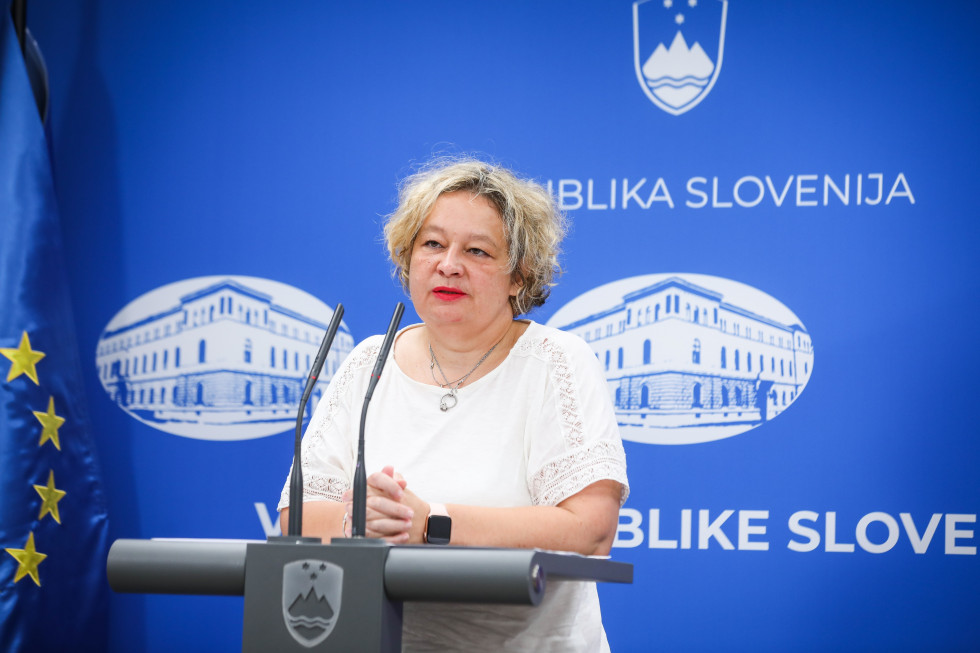Stable outlook for Slovenian and Croatian epidemiological situations, #OstaniZdrav app will be available on 19 August
Figures for new infections in the past week and over the weekend are encouraging, noted Mr Kacin, with 18 new cases recorded on Wednesday, 15 on Thursday, 10 on Friday, just 2 on Saturday and another 6 on Sunday, albeit of course with a significant reduction in testing. For yesterday Slovenia recorded 17 positive cases, with 1,058 tests performed, and this includes 8 new cases from abroad, 7 of which were from neighbouring Croatia. By municipality the highest number of new infections was 7, in Ljubljana. At this point Slovenia has a rate of 7.99 active cases of infection per 100,000 people, which places it on the green list of countries.
The various forms of support treatment for COVID-19 were covered by Mateja Logar, who outlined the method of using convalescent plasma. In a special procedure, the transfusion medicine institute takes blood from those who have recovered from COVID-19, removes the blood cells and retains the plasma, then determines how many antibodies the plasma contains. Not all of those who have recovered from COVID-19 generate a high number of antibodies, and the treatment requires plasma with as many antibodies as possible. The concentration of antibodies also declines significantly in the time after recovery. Protocols have been drawn up for plasma treatment of those experiencing serious forms of COVID-19, who require around 200 millilitres of plasma with an adequate quantity of antibodies.
The National Institute of Public Health is continuously monitoring the epidemiological picture in neighbouring Croatia, noted Mr Kacin. At this moment, with 18.84 cases of infection per 100,000 people in 14 days, Croatia is still some way off the threshold for placement on the green list of safe countries. The Croatian second wave has been much higher than the first one from March to the end of May, but like the Slovenian wave, theirs is falling relatively quickly. The number of infections by Croatian county along the coast is for the most part declining, but increases have been recorded in the county of Split-Dalmatia, with a rate of 28.57 infections. In Zadar county the rate is 10.7, Istria has 6.71, and Primorsko-goranska county has just 3.87. Conditions in Zagreb are stabilising, while the most critical region in Croatia is Vukovar-Srijem county, which has hit a rate of 73.2 infections per 100,000 people.
The app #OstaniZdrav (stay healthy) for the Android operating system has successfully undergone a trial version in the Google Play store. This Monday afternoon a production version was sent for review, and Google will look it over within seven days, then upon confirmation from the Government, it should be available to all users in the Google Play store on 19 August. The app for the iOS operating system is expected in the Apple Store by the end of August.
When a COVID-19 patient recovers, in the months that follow they may experience problems with memory, concentration, unusual tiredness and loss of muscle mass, which affect the general sense of wellbeing, advises Ms Logar. There is no difference between young and old people in these symptoms. Even someone that has recovered in just a few days at home might in the weeks and months that follow experience these health issues, which on average arise in around 20 per cent of those who suffered a mild form of the disease.
Mr Kacin and Ms Logar also talked about breaches of the Public Health Institute recommendations for socialising at parties in bars, and about the importance of the period of 14 days before the start of school, when the parents of school pupils should be as careful as possible in ensuring that young people are not exposed to the possibility of infection, so as to make the start of the school year as normal as possible, with the involvement of all children in the education process.


